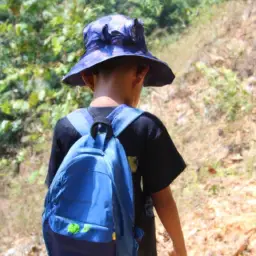Are you struggling to motivate your students to persevere through challenges? Do they give up at the first sign of difficulty? Developing grit, or the ability to persevere through obstacles, is a crucial skill for success in education and beyond.
Luckily, there are strategies you can implement in your classroom to foster grit in your students. In this article, we will explore ten strategies to help your students develop grit. From embracing failure to teaching resilience, these methods will empower your students to face challenges with determination and perseverance.
By implementing these strategies, you can help your students not only succeed academically but also develop the lifelong skills needed for success in all aspects of their lives.
Key Takeaways
- Embrace failure as an opportunity to learn and improve
- Promote a growth mindset in students
- Encourage students to embrace challenges and persist through obstacles
- Building a sense of community among students is crucial to developing their grit and resilience
Embrace Failure
You can’t become gritty without failing, so embrace failure as a necessary step towards success and growth. Overcoming failure is an important part of building resilience, and it’s essential to teach students that it’s okay to make mistakes.
Failure is not the end of the road, but rather an opportunity to learn and improve. When students are encouraged to take risks and make mistakes, they become more confident in their abilities and are more likely to persist in the face of challenges.
To foster grit in education, it’s important to create a culture where failure is seen as a natural part of the learning process. Teachers can help students develop a growth mindset by emphasizing the value of effort and hard work, rather than just focusing on grades and test scores.
By providing opportunities for students to reflect on their mistakes and learn from them, teachers can help students build the resilience they need to succeed in school and beyond. With the right support and encouragement, students can develop the grit they need to overcome obstacles and achieve their goals.
Promote a Growth Mindset
You can promote a growth mindset in your students by teaching them that intelligence and abilities can be developed through effort. Encourage them to embrace challenges and persist through obstacles, as this will help them develop grit and resilience.
By instilling a growth mindset in your students, you can create a culture of continuous learning and improvement in your classroom.
Teach students that intelligence and abilities can be developed through effort
By highlighting the power of effort and hard work, you can learn that intelligence and abilities are not fixed traits, but rather can be developed over time. Encouraging students to believe in their own potential for growth can lead to a greater willingness to take risks and persevere through challenges.
By teaching students that intelligence is not a fixed entity, but instead a malleable quality that can be developed through effort, you can foster a growth mindset that encourages experimentation and learning.
Developing effort is a key component of fostering grit in education. By emphasizing the importance of hard work and perseverance, you can help students develop a deeper appreciation for the process of learning and the value of persistence.
By encouraging students to view mistakes and setbacks as opportunities for growth and improvement, you can help them develop the resilience and determination needed to succeed in the face of adversity. Through these efforts, you can help students develop the skills and mindset needed to thrive in both academic and personal pursuits.
Encourage students to embrace challenges and persist through obstacles
Embracing challenges and persisting through obstacles is crucial for you to develop resilience and achieve success. Overcoming obstacles builds character and helps you to develop the perseverance needed to tackle even the toughest of challenges. Here are three ways to encourage you to embrace challenges and persist through obstacles:
-
Focus on the process, not just the outcome. Break down the challenge into smaller steps and celebrate each small victory. This helps you to stay motivated and focused on the task at hand.
-
Seek out challenges that are just beyond your current skill level. This helps you to stretch and grow, and builds your confidence as you overcome each new obstacle.
-
Surround yourself with supportive people who will encourage you and help you to stay motivated. This could be friends, family members, or mentors who believe in you and your abilities.
Remember, building perseverance takes time and effort, but it’s a skill that’ll serve you well throughout your life. So, embrace challenges and persist through obstacles, and watch as your resilience and success grow.
Set High Expectations
When setting high expectations for yourself, it’s important to remember that the road to success is not always easy but the rewards are worth the effort. By setting challenging goals, you push yourself to achieve more than you ever thought possible. However, it’s not enough to simply set high expectations. You must also create accountability and hold yourself responsible for meeting these expectations.
To create accountability for yourself, you can use a table like the one below to track your progress towards your goals. This table allows you to see your progress at a glance and make adjustments as necessary. By regularly reviewing your progress, you can stay on track and ensure that you are taking the necessary steps to meet your high expectations. Remember, setting high expectations is only the first step. It’s up to you to put in the hard work and dedication necessary to achieve your goals.
| Goal | Action Plan | Progress |
|---|---|---|
Provide Opportunities for Autonomy
You can foster grit in your students by providing opportunities for autonomy.
Allow your students to make choices and have control over their learning.
Encourage them to take ownership of their learning and progress by giving them the freedom to decide how they want to approach their work.
Allow students to make choices and have control over their learning
By giving students the opportunity to make choices and take control of their learning, you’ll empower them to develop grit and become more invested in their education.
Student empowerment is key to fostering grit, as it gives students a sense of ownership and responsibility over their own learning. By allowing students to personalize their learning experience through choice and control, they will be more motivated to persevere through challenges and setbacks.
One way to implement this strategy is through project-based learning. This approach allows students to choose their own projects based on their interests and passions, giving them a sense of ownership over their learning.
Additionally, teachers can incorporate student-led conferences, where students take the lead in presenting their progress and goals to their parents and teachers.
Finally, allowing students to have control over their assessment can also foster grit, as they can take pride in their progress and growth. By giving students these opportunities for autonomy, you’ll encourage them to develop grit and become more invested in their education.
Encourage students to take ownership of their learning and progress
Encouraging students to take ownership of their learning and progress can lead to increased motivation and a greater sense of responsibility for their academic success. When students feel like they have a say in their education and are responsible for their own progress, they are more likely to put in the effort needed to succeed. One way to promote student accountability is by giving them opportunities to set academic goals and track their progress towards achieving them. This can be done through regular check-ins, self-reflection activities, and goal-setting exercises.
To further promote student accountability, it is important to provide students with regular feedback on their performance. This feedback should be specific, actionable, and focused on areas where the student can improve. By providing constructive feedback, students can learn from their mistakes and make changes to their approach to achieve their goals. Overall, when students take ownership of their learning and progress, they are more likely to be motivated and invested in their education, leading to improved academic outcomes.
| Strategies to Foster Grit | Benefits | |||
|---|---|---|---|---|
| Encourage students to take ownership of their learning and progress | Increased motivation and a greater sense of responsibility for academic success | |||
| Allow students to make choices and have control over their learning | Improved engagement and a sense of autonomy in the learning process | |||
| Provide opportunities for failure and growth mindset development | Improved resilience and perseverance in the face of challenges | Foster a collaborative and supportive learning environment | Improved communication and teamwork skills, as well as a sense of community and belonging among students |
Foster a Sense of Community
Creating a strong sense of community among students is crucial to developing their grit and resilience. As an educator, you can foster this by building relationships with your students and promoting inclusivity in the classroom.
Encourage your students to get to know each other and work together on projects. Create opportunities for them to connect outside of the classroom, such as through extracurricular activities or service projects.
Furthermore, make sure that every student feels valued and included in your classroom. Address any bullying or exclusion immediately to create a safe and supportive environment.
When students feel like they’re part of a community, they’re more likely to persevere through challenges and setbacks. By fostering a sense of community, you can help your students develop the grit and resilience they need to succeed in school and beyond.
Teach Resilience
You can teach resilience to your students by helping them develop coping strategies for dealing with stress and setbacks. Encourage them to seek help and support when needed, whether it’s from a teacher, counselor, or friend.
By providing a safe and supportive environment for your students, you can help them build the resilience they need to overcome obstacles and thrive in their education.
Help students develop coping strategies for dealing with stress and setbacks
When facing stress and setbacks, you can benefit from learning coping mechanisms and stress management techniques that help you overcome challenges and continue working towards your goals.
Coping strategies can range from taking a break and engaging in self-care activities to seeking help from a trusted friend or counselor. It’s important to remember that setbacks are a natural part of the learning process and that resilience is built through facing and overcoming challenges.
One effective coping strategy is mindfulness meditation, which involves being present and fully engaged in the current moment without judgment. By practicing mindfulness, you can develop awareness of your thoughts and feelings and learn to respond to them in a more constructive way.
Other coping mechanisms include exercise, deep breathing, and positive self-talk. By learning and utilizing these strategies, you can better manage stress and setbacks and develop the grit necessary to achieve your goals.
Encourage students to seek help and support when needed
Seeking help and support can be like finding a lifeboat in rough waters, providing much-needed relief and guidance during times of struggle. As a teacher, it’s important to encourage your students to seek help when they need it.
This can be especially challenging for students who feel like they need to constantly prove themselves or appear strong. Emphasize the importance of vulnerability and remind your students that asking for help doesn’t make them weak, but rather shows strength and a willingness to learn and grow.
Creating a supportive classroom culture can also go a long way in encouraging students to seek help. When students feel like they are part of a community that cares about their well-being, they are more likely to open up and ask for help when they need it.
You can create this culture by regularly checking in with your students, having open and honest conversations about mental health and stress, and modeling vulnerability yourself. By prioritizing the importance of seeking help and creating a supportive classroom environment, you can help your students develop the resilience and grit needed to succeed in education and beyond.
Frequently Asked Questions
How can educators effectively encourage students to embrace failure without damaging their self-esteem?
To effectively encourage students to embrace failure without damaging their self-esteem, you need to create a safe and supportive learning environment.
Encouraging students to take risks and learn from their mistakes is crucial in building resilience. Emphasize that failure is a natural part of the learning process and that it’s okay to make mistakes.
Provide constructive feedback and help students learn from their mistakes to avoid repeating them in the future. Encourage students to set realistic goals and help them develop a growth mindset by focusing on their progress rather than their performance.
Teach them to celebrate their successes, no matter how small. By embracing failure and building resilience, students will develop the grit needed to succeed in school and beyond.
What are some practical ways to promote a growth mindset in students who are resistant to change?
If you’re struggling to promote a growth mindset in resistant students, there are some effective strategies you can try.
One technique is to help students set realistic goals and break them down into smaller, achievable steps. This can help them build confidence and see their progress over time.
Another strategy is to encourage students to embrace challenges and view mistakes as opportunities for growth. Rather than focusing on grades or outcomes, emphasize the process of learning and the effort students put in.
Additionally, providing students with constructive feedback and helping them identify their strengths can help them develop a more positive mindset.
By using these growth mindset techniques and strategies for resistant students, you can help your students develop the resilience and perseverance they need to succeed in school and beyond.
How can teachers set high expectations for their students without causing undue stress or anxiety?
To balance challenge and support and create a culture of perseverance, not perfectionism, you can set high expectations for your students while providing them with the necessary resources and guidance to succeed.
It’s important to find the sweet spot between pushing your students too hard and not challenging them enough. Encourage them to take risks, make mistakes, and learn from their failures.
Celebrate their progress and effort, rather than just their achievements. Foster a growth mindset by emphasizing the importance of effort and hard work in achieving success.
Ultimately, by creating a classroom environment that values perseverance and resilience, you can help your students develop the grit they need to succeed in school and beyond.
What are some ways to provide opportunities for autonomy without sacrificing academic rigor?
Balancing autonomy and rigor in education can be challenging, but it’s essential to empowering student learning.
Providing opportunities for autonomy doesn’t have to come at the expense of academic rigor. One way to achieve this balance is by offering students choices within structured parameters. For example, allowing students to select from a list of essay prompts or research topics that align with the course objectives can give them a sense of control over their learning while still ensuring that they are meeting the necessary standards.
Another way to balance autonomy and rigor is by incorporating project-based learning into the curriculum. This approach allows students to take ownership of their learning by designing and executing their own projects while still meeting the academic expectations set by the teacher.
Ultimately, finding a balance between autonomy and rigor requires thoughtful planning and a willingness to trust in the abilities of our students.
How can educators foster a sense of community among students from diverse backgrounds and with varying interests?
To foster a sense of community among students from diverse backgrounds and with varying interests, you can start by incorporating collaborative projects in your classroom. These projects allow students to work together towards a common goal, regardless of their individual differences.
Additionally, creating an inclusive classroom environment is crucial. This involves actively encouraging and valuing diverse perspectives, backgrounds, and experiences. By doing so, students feel seen, heard, and valued, which can lead to a stronger sense of community.
Encourage open communication channels and provide opportunities for students to share their thoughts and ideas. By creating a collaborative and inclusive classroom, you can foster a sense of community among your students, which can lead to increased engagement and academic success.
Conclusion
Congratulations! You’ve just learned ten key strategies to foster grit in education.
By embracing failure, promoting a growth mindset, setting high expectations, providing opportunities for autonomy, fostering a sense of community, and teaching resilience, you can help students develop the perseverance and determination they need to succeed in school and beyond.
Remember, grit is not just about sheer willpower or stubborn persistence. It’s about having a growth mindset, a sense of purpose, and a belief in one’s own ability to overcome obstacles.
So keep these strategies in mind as you work to cultivate grit in your classroom, and watch your students thrive as they learn to persevere in the face of adversity.









































































































